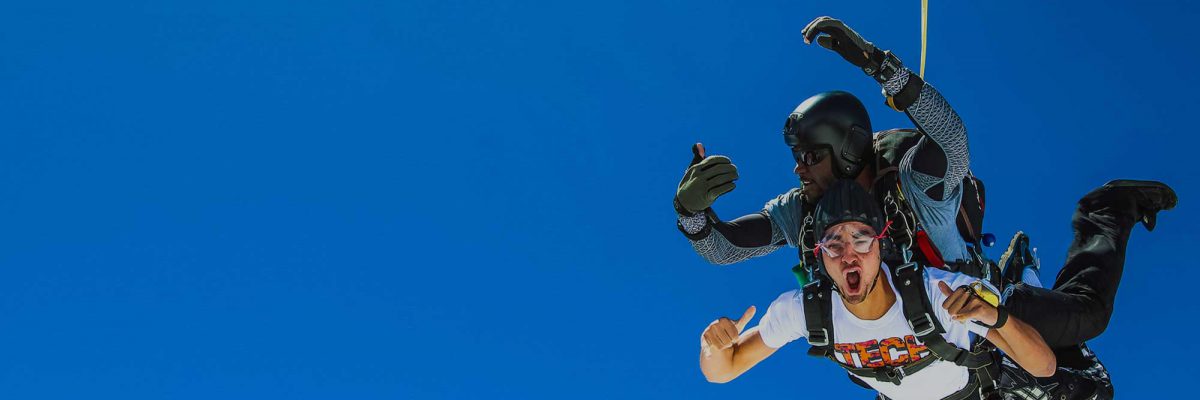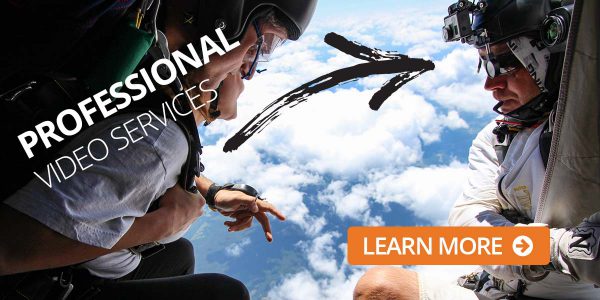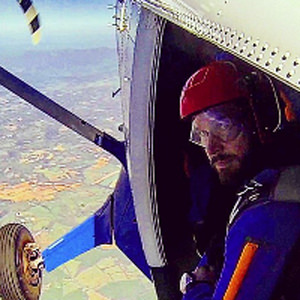
Skydiving Myths Explained
Friday, August 24, 2018
- Skydive Orange
- 8/24/18
- 0
- Skydiving Information
When we get into conversations with non-skydivers, it becomes really apparent how many skydiving myths are still kicking around. People ask us about round parachutes, about the conversations we have in freefall…and people ask us these things while referring to ripcords and “‘chutes.”
First off: It’s not their fault! We blame Hollywood. After all, movies and TV still don’t really make distinctions between our sport’s long list of unique disciplines, basically doing the skydiving equivalent of confusing surfing with skateboarding. Scripts get the lingo completely wrong, too. (We don’t have a “‘chute,” we have a canopy. And we jump, we don’t “dive.”)
Want to dig up some of those tired old myths and replace them with knowledge you can be proud of? Let’s do this thing.
TRUTH: Everyone Falls at the Same Speed
People, for some reason, tend to think that skydivers all fall at the same speed. It’s true that average freefall speed for a tandem skydiving pair will clock in at around 120mph. However, science elbows in with a couple of factors that affect the actual fall rate: the weight of the combination of people and equipment, the amount of drag (usually, from the bagginess of the jumpers’ clothing and the amount of surface area on the bottom of the arrangement).
To account for this differential, licensed sport skydivers pull out all the tricks in the book. Lighter sport skydivers will often rock weight belts around their waists to keep up with their bulkier jumping buddies on their skydiving teams. Some sport jumpers will put on loose clothing to create more drag to stay with “floatier” friends (or put on a slinky jumpsuit to cut through the air more quickly). Flying in different orientations, like the self-descriptive “head-down,” “stand” or “sit”, points less surface area downward than flying belly-to-earth, so the fall is faster.
As a tandem, you’ll be making a belly-to-earth skydive. That means that your combined surface area will be the largest, slowest possible. That’ll give you as much time as possible to check out the gorgeousness of Virginia from up top. You’re welcome!
TRUTH: You Can’t Talk in Freefall
While Hollywood would like you to believe that we’re having long chats up there, we communicate with hand signals and facial expressions, not sounds. The original ‘Point Break’ made a lot of people believe that conversations in freefall were anywhere near possible in reality. They are not.
We can do a little visualization exercise to explain our point. First, picture yourself sitting on a couch, having a conversation with a friend. Now picture full-face helmets on both of your heads. Now replace the coffee table with the biggest fan you’ve ever seen. Now make the couch 20 feet long and put yourself and your friend at opposite ends of it. Now you’re simulating a conversation in freefall.
Incredibly, we do manage to communicate up there! It just makes for lousy TV.
TRUTH: Ripcords Are a Thing of the Past
It leaves us shaking our heads that screenwriters still bring up ripcords. They haven’t been in regular use in sport or tandem skydiving for a long time. If you’re at a dropzone that still uses ripcords, you should know that you’re in the ‘Sketch Zone.’
Modern skydiving has replaced the ol’ ripcord with a pilot chute. This little piece of kit, which we lovingly refer to as a “P.C.,” is, basically, a very small round parachute. It has a handle attached to the center of the circle and a ‘bridle’ that runs down to the metal pins that keep the container firmly shut. We fold it up and tuck it securely into a long, thin pocket on the bottom of the container. The skydiver accesses the P.C. by pulling that handle when s/he’s ready to begin the deployment sequence.
When the pilot chute leaves its pouch, it inflates. That stretches the bridle, which pull the closing pins free. If you want to be lectured at about the multitude of ways this is better than a ripcord, just ask. We’ll be happy to explain.
That leads us to the most important part of all this: We love to debunk myths and answer questions! We’re more than happy to explain the processes, the gear and the minutia of skydiving until your curiosity is entirely satisfied. Just ask! It’ll be our pleasure to educate you. Come and visit us today!
The largest tandem skydiving center near Northern Virginia, Washington D.C. and Maryland.
Copyright © 2024, Skydive Orange, All Rights Reserved.
DropZone Web Design & Marketing by Beyond Marketing, LLC




